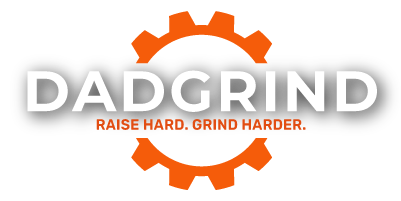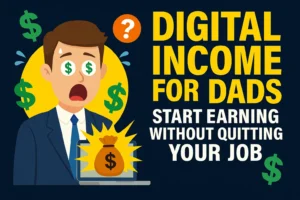If you’ve been wondering how to sell printables on Etsy, you’re not alone. It’s one of the most beginner-friendly online businesses with low overhead, minimal risk, and strong passive income potential.Printables—digital files customers can download and print at home—have skyrocketed in popularity. From planners and calendars to wall art and budget trackers, buyers love them for their affordability and convenience, while sellers love them for their scalability.
The best part? Once you create a printable, you can sell it over and over again without worrying about shipping, inventory, or production costs. This makes printables one of the most profitable niches on Etsy today.
If you’re looking for quick ideas you can start right away, check out our guide to 5 Side Hustles After 8PM: Easy Wins You Can Start Tonight.
In this comprehensive beginner’s guide, we’ll cover everything you need: why printables are so profitable, how to find your niche, which tools to use, how to list and market your products, the real costs of selling, and how to scale into a thriving digital shop—all while balancing dad life.
Why Printables Are a Profitable Etsy Business
Etsy is a digital goldmine. As of December 31, 2024, the platform reported 89.6 million active buyers worldwide. For creative entrepreneurs, it remains one of the best marketplaces to sell unique products—and digital downloads, especially printables, are in hot demand.
Benefits for Dads:
- Low startup costs: No materials, no shipping, no stock.
- Passive income potential: Create once, sell endlessly.
- Flexibility: Work around your family schedule.
- Creative outlet: Turn ideas into income with simple tools.
Printables are ideal for working dads who want to maximize time and minimize risk.
And if you often feel too exhausted to work on your side hustle, read This Is Why You’re Not Lazy — You’re Just Exhausted (And What to Do About It).
Understanding Printables and the Digital Product Market
What Are Printables?
Printables are digital files that buyers purchase, download, and print at home. Examples include:
- Planners, calendars, to-do lists
- Wall art, motivational quotes, invitations
- Worksheets, flashcards, coloring pages
- Budget trackers, savings challenges
Why Digital Beats Physical Products
- Lower costs: No shipping or packaging supplies.
- Scalability: One file = unlimited sales.
- Automation: Etsy delivers files instantly after purchase.
This makes printables a lean, scalable business model.
Step 1: Pick Your Printable Niche
The right niche sets you apart. Instead of trying to sell everything, focus on one audience and problem.
Popular niches:
- Events: wedding invitations, baby shower games, birthday decor
- Productivity: daily planners, time-blocking sheets
- Family life: meal planners, chore charts, household budget tools
- Kids & education: flashcards, worksheets, coloring pages
- Mindset: habit trackers, affirmation cards, gratitude journals
👉 Dad tip: Start with problems you face daily. If you need a family budget tracker or a kids’ chore chart, chances are other parents do too.
Step 2: Research What Sells
A big part of learning how to sell printables on Etsy is researching what’s already working. Study Etsy’s marketplace to find demand.
How to research:
- Browse “Bestseller” tags
- Read reviews to see what customers like/dislike
- Note seasonal patterns (planners in January, teacher tools in August)
Tools to use:
Quick Comparison: eRank vs. Marmalead
| Feature | eRank | Marmalead |
| Free Plan | Yes (limited features) | No |
| Keyword Research | Trends & competition metrics | Buyer-focused keyword depth |
| Pricing | Free; Pro $9.99/mo; Expert $29.99/mo | $19/mo (monthly); $16/mo (annual); $18/mo (quarterly); $300/lifetime |
| Ease of Use | Beginner-friendly | Advanced, steeper learning curve |
| Best For | New sellers testing the waters | Experienced sellers scaling |
👉 Dad-friendly takeaway: Begin with eRank’s free plan. Once sales grow, consider Marmalead for deeper insights.
Step 3: Create Printables That Sell on Etsy
No graphic design degree required. Tools like Canva make design simple.
Design Tools:
- Canva: Easy, beginner-friendly, templates galore.
- Adobe Illustrator/Photoshop: For advanced designers.
- Affinity Designer: Professional, budget-friendly one-time purchase.
Design Tips:
- Keep layouts clean & easy to print.
- Use fonts that are legible on paper.
- Stick with print-friendly colors.
- Offer standard sizes (A4, Letter).
- Always export at 300 DPI for high resolution.
Pro dad tip: Start by creating something you’ll use in your own home—budget trackers, meal planners, or kids’ schedules.
Step 4: Set Up Your Etsy Shop
Setting up an Etsy shop involves more than just filling in a form—it’s your storefront and brand identity. Taking extra time here can set you apart.
Steps to Open Your Shop
- Create an Etsy account: Go to Etsy’s seller page and register.
- Choose a shop name: Keep it short, memorable, and niche-relevant. Make sure it’s easy to spell and available as a domain if you plan to expand later.
- Branding elements: Design a logo and banner using tools like Canva. Maintain consistent colors and fonts to build brand recognition.
- Fill in shop policies: Add processing times (instant for digital files), refund policy, and FAQ. Clear policies build buyer trust.
- Set up payment and billing: Connect your bank account and configure payment settings so you can get paid.
- Add your first listings: Upload products with detailed titles, descriptions, keywords, and attractive visuals.
Importance of Mockups and Presentation
Since buyers can’t touch digital goods, visuals carry huge weight. Use mockup tools like Placeit or Canva to showcase your printable in real-life scenarios:
- A planner laid out on a neat desk with a coffee mug.
- Wall art hanging in a styled living room.
- Worksheets next to school supplies.
High-quality branding and mockups communicate professionalism and help buyers imagine your product in their own lives.
Step 5: Understand Etsy Fees & Costs
Part of learning how to sell printables on Etsy is understanding the platform’s fees and building them into your pricing strategy. Here’s what to expect:
- Listing Fee: $0.20 per listing (lasts 4 months).
- Auto-renew & Multi-quantity: If a listing sells and auto-renews, or if multiple quantities sell from one listing, Etsy charges $0.20 for each additional unit sold beyond the first.
- Transaction Fee: 6.5% of the selling price (including shipping and gift wrap where applicable).
- Payment Processing Fee: Varies by country (in the U.S., 3% + $0.25 per order).
- Optional Etsy Ads: Budget-based, usually $1–$3/day to start.
Example Cost Breakdown
If you sell a printable for $5:
- Listing Fee: $0.20
- Transaction Fee (6.5%): $0.33
- Payment Fee (3% + $0.25): $0.40
- Total Fees: $0.93
- Your Profit: $4.07
If you sell a bundle for $15:
- Listing Fee: $0.20
- Transaction Fee (6.5%): $0.98
- Payment Fee (3% + $0.25): $0.70
- Total Fees: $1.88
- Your Profit: $13.12
👉 Pro dad tip: Bundles often deliver higher profits because fees are a smaller percentage of the total sale.
For more ways to build passive income streams, don’t miss Digital Income for Dads: Start Earning Without Quitting Your Job.
Step 6: Price Your Printables
Pricing is one of the most important levers for success. Undervaluing your work means you earn pennies after Etsy fees, while overpricing may drive buyers away. The sweet spot lies in balancing competitiveness with the value your product delivers.
General Guidelines
- Single printables: $2–$10 (e.g., a one-page budget tracker or calendar insert)
- Bundles: $15–$30+ (e.g., a full planner kit with 10+ pages)
- Premium sets: $40–$60 (large themed bundles, such as wedding or homeschool packs)
Factors That Influence Pricing
- Complexity of design: More detailed or interactive templates can command higher prices.
- Target audience: Professionals or event planners may pay more than casual buyers.
- Perceived value: Adding instructions, variations, or bonus sheets increases value.
- Competition: Research what similar shops charge and position yourself accordingly.
Pro Tips for Dads
- Bundle Strategically: Fees take a smaller percentage of higher-priced items, so bundles often yield better margins.
- Test and Adjust: Don’t be afraid to experiment with prices. Track which listings convert best at which price points.
- Account for Fees: Remember Etsy fees (listing + transaction + payment). Always calculate your net profit.
👉 Key takeaway: Buyers aren’t just paying for a PDF—they’re paying for the time saved, convenience, and creativity you deliver.
Step 7: Market Your Etsy Shop
Listing alone won’t drive sales. You’ll need marketing.
SEO
- Add keywords to titles, tags, descriptions, attributes.
- Use keyword tools like eRank.
Perfect for visual products like printables.
- Pin attractive mockups.
- Create niche boards (e.g., “Budget Planner Ideas”).
Social Media
- Instagram: share behind-the-scenes.
- TikTok: quick tips or demos.
- Facebook groups: contribute in relevant communities.
Etsy Ads
Start with small daily budgets ($1–$3) to boost visibility.
👉 Dad tip: Short on time? Focus on Pinterest. It’s long-lasting and drives consistent traffic.
Step 8: Provide Excellent Customer Experience
Even with digital files, service matters.
Best practices:
- Respond quickly to messages.
- Provide download/printing instructions.
- Update files if errors are found.
- Consider including a thank-you PDF with tips.
Happy customers = glowing reviews = more sales.
Step 9: Scale Your Shop
The secret to long-term growth: consistency.
Ways to scale:
- Add seasonal printables (holiday planners, back-to-school kits).
- Repurpose designs (turn a daily planner into a weekly/monthly).
- Create bundles to increase order value.
- Expand into other marketplaces (Creative Market, Design Bundles, Shopify).
Once you’ve learned how to sell printables on Etsy, scaling your shop becomes much easier. Each new product is like planting another seed for passive income.
Common Mistakes to Avoid
- Underpricing/Overpricing: Find balance.
- Ignoring SEO: If buyers can’t find you, they can’t buy.
- Low-quality designs: Always export high-res and test print.
- Forgetting Etsy fees: Price too low and you may make pennies per sale.
- Not reinvesting: Use profits to create more designs or test ads.
Success Stories & Inspiration
Many Etsy sellers start small and scale big:
- Teachers earning side income with worksheets.
- Artists turning illustrations into printable wall art.
- Parents creating planners that grow into lifestyle brands.
Consistency + creativity = long-term success.
FAQs About Selling Printables on Etsy
Q1. Do I need design experience?
No. Canva makes it easy for beginners.
Q2. Can I sell Canva templates?
Yes, but customize them significantly to comply with licensing.
Q3. How much can I earn?
Anywhere from a few hundred a month to six figures—depends on quality, marketing, and consistency.
Q4. What formats should I use?
PDF is standard. Wall art can also be JPG/PNG. Bundles can be ZIP files.
Q5. Can I sell internationally?
Yes. Digital delivery makes it global by default.
Q6. What are Etsy’s costs?
Each listing costs $0.20, plus 6.5% transaction fees and a 3% + $0.25 payment fee per order. Always build these into your pricing.
Q7. How much should I budget for ads?
Start small ($1–$3/day). Track results and only scale ads that show a return on investment.
Quick Recap Checklist
- Pick a niche
- Research demand with tools
- Design with Canva or similar
- Set up your shop professionally
- Understand Etsy fees & costs
- Price competitively
- Market with SEO & Pinterest
- Provide great service
- Scale consistently
Your Roadmap to Etsy Success
Selling printables on Etsy is one of the most dad-friendly side hustles out there. Low costs, high scalability, and flexible hours make it an ideal way to earn extra income while staying present for your family.
The journey begins with one product, one listing, one sale. Over time, those small steps stack up into meaningful results. Pour a coffee, fire up Canva, and take your first step today—your future Etsy business could be just one printable away.
Ready to level up your side hustle?

